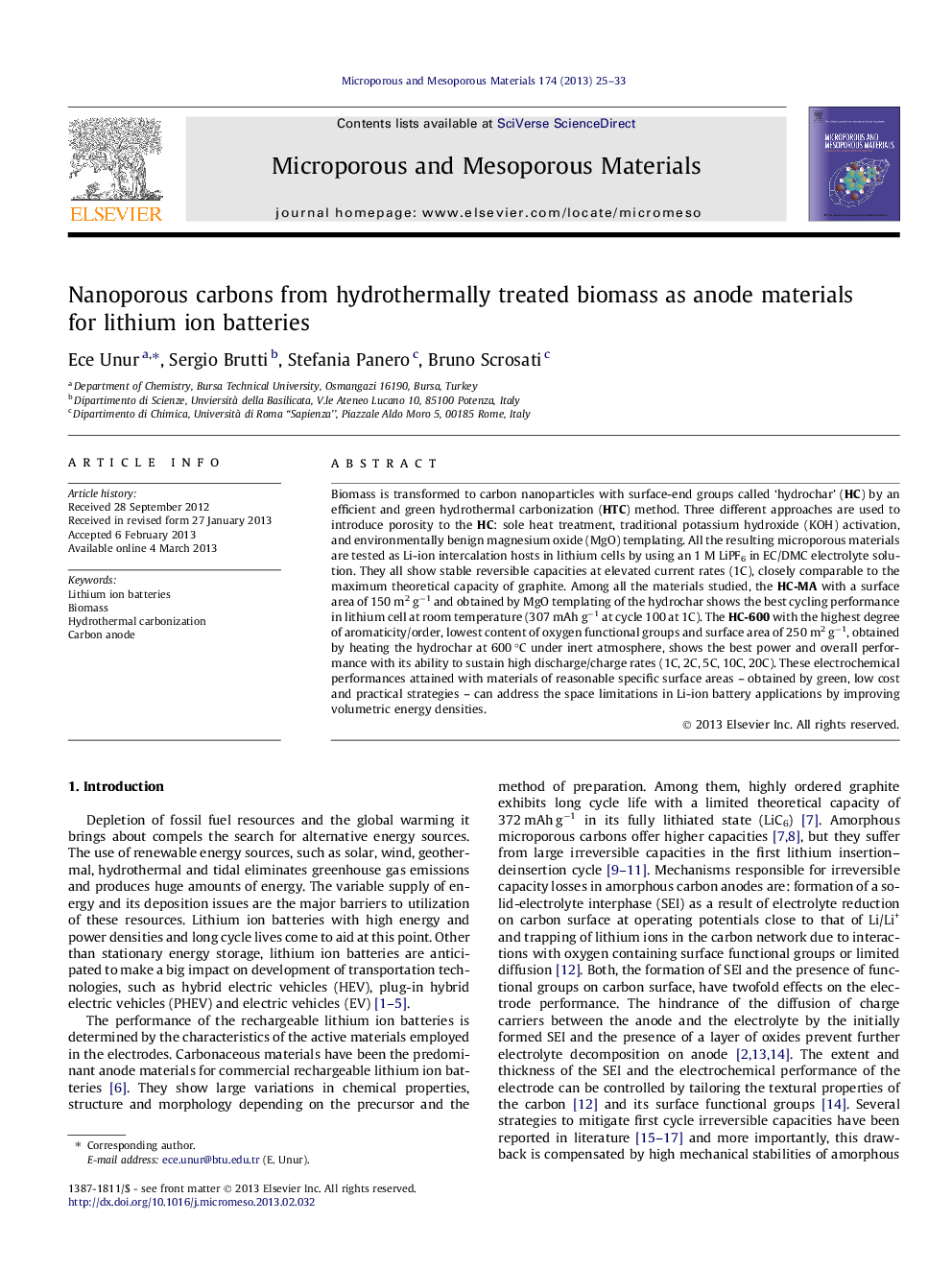| Article ID | Journal | Published Year | Pages | File Type |
|---|---|---|---|---|
| 73632 | Microporous and Mesoporous Materials | 2013 | 9 Pages |
Biomass is transformed to carbon nanoparticles with surface-end groups called ‘hydrochar’ (HC) by an efficient and green hydrothermal carbonization (HTC) method. Three different approaches are used to introduce porosity to the HC: sole heat treatment, traditional potassium hydroxide (KOH) activation, and environmentally benign magnesium oxide (MgO) templating. All the resulting microporous materials are tested as Li-ion intercalation hosts in lithium cells by using an 1 M LiPF6 in EC/DMC electrolyte solution. They all show stable reversible capacities at elevated current rates (1C), closely comparable to the maximum theoretical capacity of graphite. Among all the materials studied, the HC-MA with a surface area of 150 m2 g−1 and obtained by MgO templating of the hydrochar shows the best cycling performance in lithium cell at room temperature (307 mAh g−1 at cycle 100 at 1C). The HC-600 with the highest degree of aromaticity/order, lowest content of oxygen functional groups and surface area of 250 m2 g−1, obtained by heating the hydrochar at 600 °C under inert atmosphere, shows the best power and overall performance with its ability to sustain high discharge/charge rates (1C, 2C, 5C, 10C, 20C). These electrochemical performances attained with materials of reasonable specific surface areas – obtained by green, low cost and practical strategies – can address the space limitations in Li-ion battery applications by improving volumetric energy densities.
Graphical abstract.Figure optionsDownload full-size imageDownload as PowerPoint slideHighlights► Biomass was hydrothermally carbonized to nanostructured hydrochar. ► Thermal treatment of hydrochar gave improved energy/power anode materials. ► The green and the practical approach promises for industrial applications.
